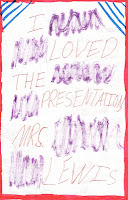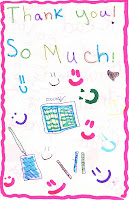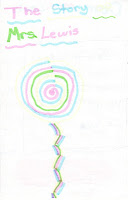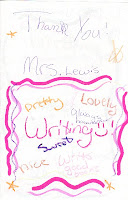 Sometimes life is so beautiful it’s almost hard to live it. At times, the work, too. In Spring, there are days when I actually live the life that people imagine children’s book authors do every day of the year.
Sometimes life is so beautiful it’s almost hard to live it. At times, the work, too. In Spring, there are days when I actually live the life that people imagine children’s book authors do every day of the year.
Yesterday, I had a big plan for serious checking things off my list. (Respond to book proposal from editor who wants me to write to go with a photographer’s photographs, write endmatter on current nutty main project, update website, respond to someone about changing a talk description, sort three weeks of photographs from marshes in Ohio, file bills, make travel decisions, book necessary travel, set up house repairs, etc.)
Chickadees interrupted me with flurry, alarm calls, and general fuss, and before I knew it, I was out in the yard with my camera. What could I do but witness and somewhat photograph what was going on?
Chickadees cleaning out the next box.
Chickadees leaving the nest box for the first time...and predators threatening the chicks.
Three species of woodpeckers feeding babies high up on the oak trees.
Squirrels being squirrels. (Three species of those, too.)
An indigo bunting popping in and out of the scene.
 I did eventually manage to get back to my computer to announce the release of my new book Go, Go, Grapes: a Fruit Chant. Then I got to work on my current work, the sequel, Let’s Go Nuts: Seeds We Eat.
I did eventually manage to get back to my computer to announce the release of my new book Go, Go, Grapes: a Fruit Chant. Then I got to work on my current work, the sequel, Let’s Go Nuts: Seeds We Eat.
I needed to chase down some coconuts for the next photo. So in the mid-afternoon lull of bird activity I traveled the world in our small town. I spent time talking to Saigon market grocers about how soy beans are used in Asian cuisine, and the many forms of mung beans, shelled and otherwise. Gave them my fruit chant book, in which their durian fruit, dragonfruit, and mangosteen star.
Stopped by the farmer’s market to coordinate Go, Go, Grapes signing.
At El Paraiso, a wonderful Mexican market, I found (finally) some young coconuts and some purple varieties of corn for an upcoming photograph. I also got permission to photograph beans in their store.
Then, all afternoon, I photographed and fussed over various beans and seeds. Perhaps the neighbors thought I was slightly nuts, walking around the yard photographing trays of nuts in various colors of full and dappled light with an assortment of flashes. I was also picking off cottonwood fluff falling from the trees, brushing aside errant ants, and waving away a few flies that kept hopping into the picture. Nothing worse than taking the perfect picture and then finding out when you see it on large screen that the star player is an ant you did not know was there.
At one point I was sitting in the grass test photographing a tray when six feet from me, in the now empty chickadee house, a bird emerged. A wren was already stuffing the house with sticks and emptying the earlier tenants’ contents from inside!
Spring is like that. It’s at times almost too exuberant to manage. I know my friends, celebrating childrens’ proms and graduations from high school and college, feel that way. Here, in the world of nature and writing, there’s that wild sweetness, too.
For me, enjoying this peak time, this immersion, came with some work. I could not have done it six weeks ago. After two years of glorious but goofy overwork, some of the most challenging, stretching, and joyful of my life, I could not breathe properly or even speak about writing. I still had school visits but I cut back my writing schedule and expectations for a few weeks. I had to literally not get excited about new projects. In other years my school visit/deadline schedule has been so heavy that I have been fried by the time that the bird migration began and unable to actually settle in and enjoy it.
Animal migration has been my main study subject for the last twenty years although I haven’t published extensively about it. (Once had an eight book series contract on it; editors were laid off in a reorganization.) We plan all our travel around migratory events. Jeff and I love migration so much that bird migration time is blocked off on our calendar. This is sacrosanct nature vacation time. Over the years I’ve gotten better and better at saying “no” to deadlines and talks during these weeks. Because a birder has only so many wildflower blooms and migrations to see in her lifetime.

This year my only transgression was to pop into Chicago for IRA for two days. Mistake. I was in the halls at IRA in Chicago and Jeff called me to tell me the winds and storms were in the right spots for a possible fallout of birds. A deep feeling came over me: THIS IS NOT WHERE I NEED TO BE. As I hailed a taxi, dashed back to my lodgings for my suitcase, and caught a train home, I made the necessary calls to cancel dinner and meeting plans.
Such a surge of choice and freedom. This was what I needed to do. Had to do. A day later, we were watching warblers and photographing them. Step-by-step, my brain began to settle and joys and new ideas began to arise. With lots of warblers and walks, my peace and balance returned. Now nature time and projects are particularly sweet because I can deeply experience them, not just flutter about in over-revved spaz.
In between writing some of these sentences, I have paused to photograph an oriole at the oranges we put out for it, woodpeckers feeding again, and a butterfly up on the lilac. I just saw and photographed a flicker feeding in an anthill. In between, I am trying not to allow the sun onto the light focusing lens I have attached to my camera flash because it can catch things on fire. A chipmunk is now under my chair. That’s Spring. Here comes a downy! Chattering and chirping.
This time of year, I keep thinking of things I want to share/post but then, the Spring is so packed full with life and lovely interruptions that most days, I do not post a thing. I wish I could bottle this time, keep it potent and powerful, for darker seasons of life and year. Oh, twell! I have the photographs to help me remember.









































